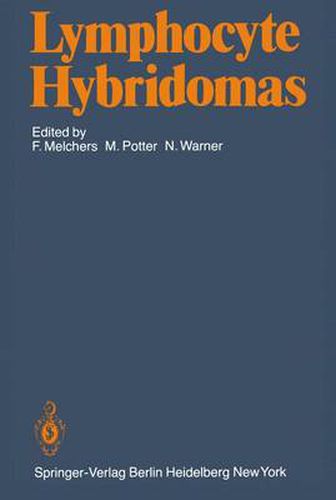Readings Newsletter
Become a Readings Member to make your shopping experience even easier.
Sign in or sign up for free!
You’re not far away from qualifying for FREE standard shipping within Australia
You’ve qualified for FREE standard shipping within Australia
The cart is loading…






F. Melchers, M. Potter, NL. Warner HISTORICAL Prior to 1964 many workers had experienced considerable difficulty in establishing continuous lines of murine plasmacytoma in culture. Pettingill and Sorenson in 1966 grew X5563 after a painstaking period of adaptation. During a visit to the Salk Instiute in 1965 Leo Sachs began experiments with K. Horibata,E. S. Lennox and M. Cohn that ulti- mateley convinced most workers that murine plasmacytomas could be grown in vitro with ease. They adapted MOPC-21 * {called P3 at the Salk Institute) to in vitro culture and showed the cells produced a large amount of the IgG1 myeloma protein. Horibata, Lennox and Sachs did not report the important finding though a manuscript was written and accepted. The reason for the failure to publish the paper was that the original line was not recovered from the freezer and knowing there would be many requests for it the paper was withdrawn. As it later turned out, the failure to recover the line may have been triv- ial, for Horibata and Harris (1970) soon re-established a continuous line of P3 now named P3K. This line was distributed to other workers including Cesar Milstein in Cambridge. Soon after the success with P3, Scharff and colleagues at Albert Einstein established MPC-11*in cul- ture. Up to now continuous growth of human myeloma cells in vitro has remained a formidable problem.
$9.00 standard shipping within Australia
FREE standard shipping within Australia for orders over $100.00
Express & International shipping calculated at checkout
F. Melchers, M. Potter, NL. Warner HISTORICAL Prior to 1964 many workers had experienced considerable difficulty in establishing continuous lines of murine plasmacytoma in culture. Pettingill and Sorenson in 1966 grew X5563 after a painstaking period of adaptation. During a visit to the Salk Instiute in 1965 Leo Sachs began experiments with K. Horibata,E. S. Lennox and M. Cohn that ulti- mateley convinced most workers that murine plasmacytomas could be grown in vitro with ease. They adapted MOPC-21 * {called P3 at the Salk Institute) to in vitro culture and showed the cells produced a large amount of the IgG1 myeloma protein. Horibata, Lennox and Sachs did not report the important finding though a manuscript was written and accepted. The reason for the failure to publish the paper was that the original line was not recovered from the freezer and knowing there would be many requests for it the paper was withdrawn. As it later turned out, the failure to recover the line may have been triv- ial, for Horibata and Harris (1970) soon re-established a continuous line of P3 now named P3K. This line was distributed to other workers including Cesar Milstein in Cambridge. Soon after the success with P3, Scharff and colleagues at Albert Einstein established MPC-11*in cul- ture. Up to now continuous growth of human myeloma cells in vitro has remained a formidable problem.